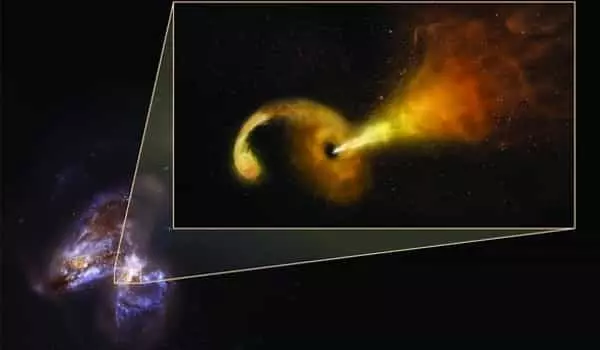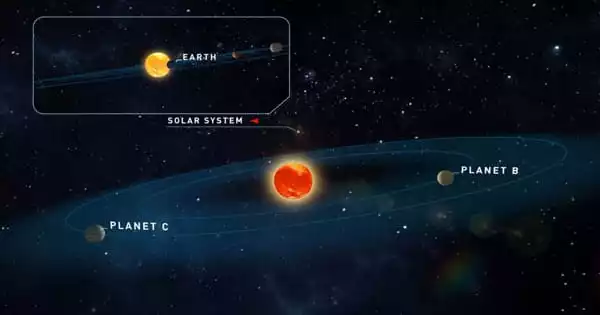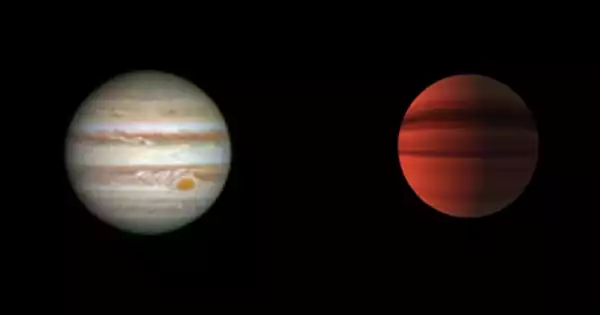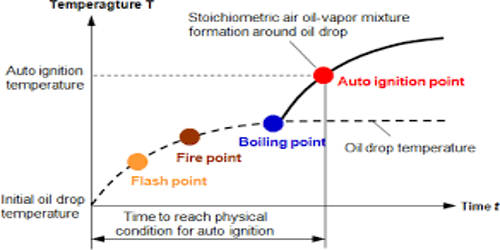When a black hole devours a star, astronomers refer to it as a “tidal disruption event.” The severing of the unfortunate star is accompanied by an outburst of radiation that can outshine the combined light of every star in the black hole’s host galaxy for months, if not years. While black holes and toddlers don’t appear to have much in common, they do share one trait: both are messy eaters, leaving plenty of evidence that a meal has occurred.
However, whereas one may leave behind droppings of pasta or splatters of yogurt, the other leaves behind a colossal mess. When a black hole devours a star, astronomers refer to it as a “tidal disruption event.” The severing of the unfortunate star is accompanied by an outburst of radiation that can outshine the combined light of every star in the black hole’s host galaxy for months, if not years.
A team of astronomers led by Sixiang Wen, a postdoctoral research associate at the University of Arizona Steward Observatory, use X-rays emitted by a tidal disruption event known as J2150 to make the first measurements of the black hole’s mass and spin in a paper published in The Astrophysical Journal. This black hole is of a type known as an intermediate-mass black hole, which has long eluded detection.
Analyzing observations of an X-ray flare and fitting the data with theoretical models, astronomers documented a fatal encounter between an unlucky star and a black hole.
“The fact that we were able to capture this black hole while it was devouring a star provides a remarkable opportunity to observe what would otherwise be invisible,” said Ann Zabludoff, UArizona professor of astronomy and paper co-author. “Not only that, but by analyzing the flare, we were able to gain a better understanding of this enigmatic category of black holes, which may well account for the majority of black holes in galaxies’ centers.”
The authors demonstrated that the J2150 flare was caused by an encounter between an unlucky star and an intermediate-mass black hole by re-analyzing the X-ray data used to observe it and comparing it to sophisticated theoretical models. The intermediate black hole in question has an unusually low mass for a black hole, weighing roughly 10,000 times the mass of the sun.
“We were able to infer the mass and spin of this black hole and classify it as an intermediate black hole thanks to the X-ray emissions from the inner disk formed by the debris of the dead star,” Wen explained.
Dozens of tidal disruption events have been observed in the centers of large galaxies containing supermassive black holes, as well as a few in the centers of small galaxies that may contain intermediate black holes. Previous data, however, has never been detailed enough to prove that a single tidal disruption flare was powered by an intermediate black hole.

“We now know, thanks to modern astronomical observations, that the centers of almost all galaxies similar to or larger in size than our Milky Way host central supermassive black holes,” study co-author Nicholas Stone, a senior lecturer at Hebrew University in Jerusalem, said. “These behemoths range in size from 1 million to 10 billion times the mass of our sun, and when too much interstellar gas falls into their vicinity, they become powerful sources of electromagnetic radiation.”
The mass of these black holes is closely related to the total mass of their host galaxies, with the largest galaxies hosting the largest supermassive black holes. “We still know very little about the existence of black holes in the centers of galaxies smaller than the Milky Way,” said co-author Peter Jonker of Radboud University in the Netherlands and SRON Netherlands Institute for Space Research. “It is difficult to discover central black holes much smaller than 1 million solar masses due to observational limitations.”
According to Jonker, despite their presumed abundance, the origins of supermassive black holes are unknown, and many different theories are currently competing to explain them. Intermediate-mass black holes may be the seeds that grow into supermassive black holes.
“As a result, determining how many genuine intermediate black holes are out there can help us determine which theories of supermassive black hole formation are correct,” he said. Even more exciting, according to Zabludoff, is the group’s ability to measure J2150’s spin. The spin measurement may hold clues to how black holes grow, as well as particle physics.
This black hole has a fast spin, but it is not the fastest possible spin, according to Zabludoff, raising the question of how the black hole came to have a spin in this range. “It’s possible that the black hole formed in this manner and hasn’t changed much since, or that two intermediate-mass black holes recently merged to form this one,” she explained. “We do know that the spin we measured excludes scenarios in which the black hole grows over time from steadily eating gas or from a large number of quick gas snacks arriving from random directions.”
Furthermore, spin measurement allows astrophysicists to test hypotheses about the nature of dark matter, which is thought to account for the majority of matter in the universe. Dark matter could be made up of unknown elementary particles that have yet to be discovered in laboratory experiments. Stone explained that among the candidates are hypothetical particles known as ultralight bosons.
“If those particles exist and have masses in a certain range,” he says, “they will prevent an intermediate-mass black hole from having a fast spin.” “Nonetheless, J2150’s black hole is spinning rapidly. As a result, our spin measurement rules out a broad class of ultralight boson theories, demonstrating the importance of black holes as extraterrestrial particle physics laboratories.”
The authors hope that future observations of tidal disruption flares will allow astronomers to fill in the gaps in the black hole mass distribution. “If it turns out that the majority of dwarf galaxies have intermediate-mass black holes, then they will dominate the rate of stellar tidal disruption,” Stone said. “We can conduct a census of the universe’s intermediate-mass black hole population by fitting the X-ray emission from these flares to theoretical models,” Wen added.
However, more tidal disruption events must be observed in order to accomplish this. That’s why astronomers are excited about new telescopes that will be available soon, both on Earth and in space, such as the Vera C. Rubin Observatory, also known as the Legacy Survey of Space and Time, or LSST, which is expected to detect thousands of tidal disruption events per year.
















